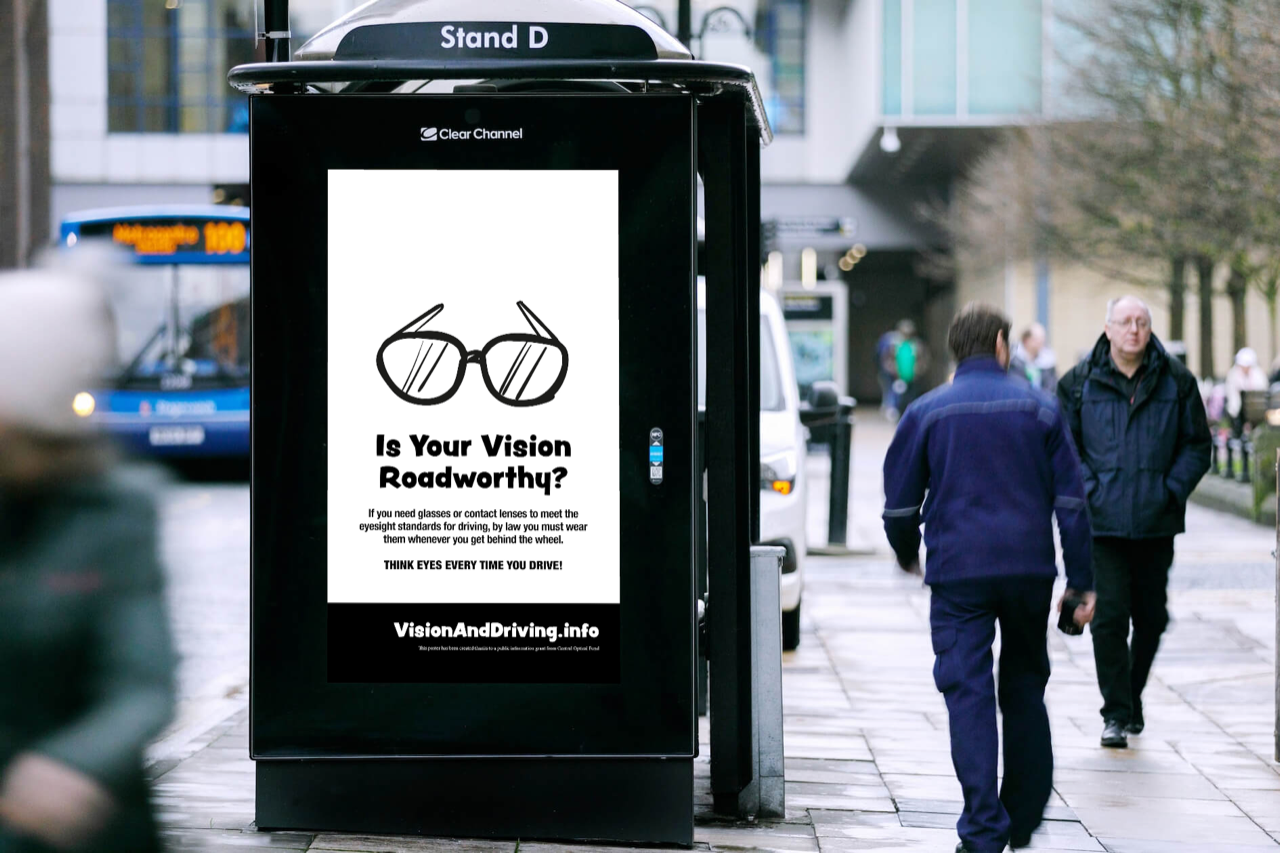Vision and driving campaign launched

Campaign coincides with the early May Bank Holiday when traffic volumes are set to peak
Optical bodies have united to work alongside motoring organisations to launch ‘Is Your Vision Roadworthy?’ – a public information campaign which aims to educate motorists about their legal obligation to ensure their eyesight is fit to drive.
Ahead of the official campaign launch today (Friday 28 April), police forces throughout England, Scotland and Wales conducted roadside vision screening wherever possible, when stopping a vehicle. Twenty-three out of 45 police forces submitted data for 898 motorists. This information was then collated and analysed by Dr Carol Hawley, University of Warwick and CARGY Research – and 2.2 per cent of number plate tests resulted in failure.
Extrapolating this data across the active driving licence holders in the UK suggests more than 900,000 British drivers would fail to meet even the most basic eyesight standard for driving, the campaign highlights. Men made up three quarters of those who failed the number plate test. The average age of those unable to read a number plate from 20 metres was 69.3 years; the youngest driver to fail was 30 and the oldest 90 years of age. Eighty-five per cent of drivers who failed the roadside vision screening had their licence revoked on-the-spot under legislation known as Cassie’s Law.
The campaign launch coincides with the early May Bank Holiday (28 April to 1 May) when traffic volumes are set to peak. The charity Eye Health UK estimates that over the Bank Holiday period, more than half a million car journeys will be made by drivers whose vision falls below the legal limit, due to an undiagnosed or untreated vision condition or simply because a driver isn’t wearing the eye wear they have been prescribed for driving – a third of those who failed the number plate test and had been prescribed corrective lenses were not wearing them at the time they were stopped for the roadside test.
Chief Constable Jo Shiner, the National Police Chief Council’s lead for Roads Policing, said: “Personal responsibility is the starting point for safer roads. Making sure your eyesight meets the standards of vision for driving is really important and something only you can do to keep yourself and all other road users safe while driving.”
The campaign, supported by a grant from Central Optical Fund, will see motorists encouraged to have routine eye tests to keep their vision roadworthy and prevent it becoming a road safety hazard.
A state-of-the-art driving simulator at Brunel University gives an insight into what can happen when people drive with poor eyesight. When a driver’s vision was blurred, they struggled to stay in lane, keep a consistent speed, or read road signs. Even when sight was simply reduced to the legal minimum level, people strayed out of lane 62 per cent more often than with normal vision. They also couldn’t recognise a quarter (23 per cent) of the road signs they passed. Impaired vision also prevents motorists from reacting to hazards and causes fatigue.
Around 3,000 people are killed or injured by a driver with failing eyesight every year in the UK.
Emma Damen, daughter of Jim Tassell who was killed when a driver knocked him off his bike while he cycled along a country lane near Andover, Hampshire in 2022, said: “My Dad was killed by a driver who could not see more than two metres ahead, the legal requirement is 20 metres. This driver knew his eyesight was defective yet still chose to drive resulting in indescribable devastation to me and my family. I urge anyone who has concerns regarding their own eyesight or another driver, please get an eyesight test to confirm you are safe to drive.”
Forty-two per cent of drivers undertaking the roadside vision screening admitted they had not had an eye test in the last two years, as recommended.
Throughout the public information campaign – which includes, a national roadside poster campaign, media relations activity, a podcast, social media promotion and launch of a dedicated website VisionAndDriving.info – motorists will be reminded about the importance of ensuring their vision is roadworthy, how to keep their eyes fit for the road and what the eyesight standards for driving are. They will also hear practical tips for maximising visual comfort when behind the wheel and advice on retiring from the road.
Practices can get involved and support the campaign using promotional materials cascaded down from the optical bodies.
Follow the campaign on socials by searching for the hashtags:
#IsYourVisionRoadworthy
#ThinkEyesEveryTimeYouDrive
#RoadSafetyCheck